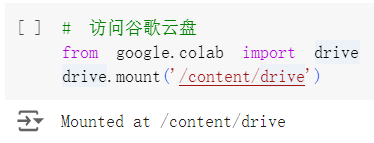前言
官方教程:Diffusers
本文主要内容:
1. 训练简单的无条件扩散模型; 2. 实验过程中遇到的问题及解决方法。说明:实验在Google Colab上进行。
准备工作
!pip install diffusers[training]
# 版本控制大型文件
!sudo apt -qq install git-lfs
!git config --global credential.helper sotre
# 登录账户
from huggingface_hub import notebook_login
notebook_login()
设置训练超参数
from dataclasses import dataclass
@dataclass
class TrainingConfig:
image_size = 128 # 生成图像分辨率
train_batch_size = 16
eval_batch_size = 16
num_epochs = 50
gradient_accumulation_steps = 1
learning_rate = 1e4
lr_warmup_steps = 500
save_image_epochs = 10
save_model_epochs = 30
mixed_precision = "fp16"
output_dir = "ddpm-demo-128"
push_to_hub = False # 是否上传模型到HF Hub,如果上传需要登录账户,输入令牌
# hub_model_id = "<your-username>/<my-awesome-model>"
# hub_private_repo = False
# overwrite_output_dir = True # 修改旧模型
seed = 0
config = TrainingConfig()
这里我设置的不上传模型到HF Hub,后面我会单独上传,有需要的话可以设置为“True”,取消注释,改为自己的信息。
加载数据集
(一)使用提供的数据集
# 蝴蝶数据集
from datasets import load_dataset
config.dataset_name = "huggan/smithsonian_butterflies_subset"
dataset = load_dataset(config.dataset_name, split="train")
这里使用的是蝴蝶数据集,可以自己在 Datasets 中选择数据集。
(二)使用自己的数据集
如果想使用自己的数据集,需要先将数据集上传到同一账号的 Google Drive,然后访问。

左侧文件夹中可以看到“drive”即为连接成功。
注意:数据集结构应满足如下目录结构:
folder/train/dog/golden_retriever.png
folder/train/dog/german_shepherd.png
folder/train/dog/chihuahua.png
folder/train/cat/maine_coon.png
folder/train/cat/bengal.png
folder/train/cat/birman.png
如果需要上传目标检测相关任务使用的数据集,可以查看文档 创建图像数据集 要求。
如果想把数据集上传到hub,执行下列命令。
# 上传数据集
from datasets import load_dataset
dataset = load_dataset("imagefolder", data_dir="drive/MyDrive/dataset_name")
dataset.push_to_hub("dm/demo-dataset")
加载上传的数据集。
# 加载训练数据集
from datasets import load_dataset
dataset = load_dataset("imagefolder", data_dir="drive/MyDrive/dataset_name", split="train")
print(dataset)
Datasets 使用 Image 功能自动解码图像数据并将其加载为 PIL.Image 。
因为图像大小不一致,需要进行预处理。
# 数据集预处理
from torchvision import transforms
preprocess = transforms.Compose(
[
transforms.Resize((config.image_size, config.image_size)),
transforms.RandomHorizontalFlip(),
transforms.ToTensor(),
transforms.Normalize([0.5], [0.5]),
]
)
def transform(examples):
images = [preprocess(image.convert("RGB")) for image in examples["image"]]
return {"images": images}
# 使用set_transform方法,可以在训练期间动态应用preprocess
dataset.set_transform(transform)
# 将数据集包装到DataLoader中进行训练
import torch
train_dataloader = torch.utils.data.DataLoader(dataset, batch_size=config.train_batch_size, shuffle=True)
创建一个UNet2DModel
from diffusers import UNet2DModel
model = UNet2DModel(
sample_size=config.image_size, # the target image resolution
in_channels=3, # the number of input channels, 3 for RGB images
out_channels=3, # the number of output channels
layers_per_block=2, # how many ResNet layers to use per UNet block
block_out_channels=(128, 128, 256, 256, 512, 512), # the number of output channels for each UNet block
down_block_types=(
"DownBlock2D", # a regular ResNet downsampling block
"DownBlock2D",
"DownBlock2D",
"DownBlock2D",
"AttnDownBlock2D", # a ResNet downsampling block with spatial self-attention
"DownBlock2D",
),
up_block_types=(
"UpBlock2D", # a regular ResNet upsampling block
"AttnUpBlock2D", # a ResNet upsampling block with spatial self-attention
"UpBlock2D",
"UpBlock2D",
"UpBlock2D",
"UpBlock2D",
),
)
可以检查一下示例图像形状与模型输出是否匹配。
sample_image = dataset[0]["image"].unsqueeze(0)
print("Input shape:", sample_image.shape)
# Input shape: torch.Size([1, 3, 128, 128])
print("Output shape:", model(sample_image, timestep=0).sample.shape)
# Output shape: torch.Size([1, 3, 128, 128])
经过尝试,我发现如果图像大小改为256,512等更大的尺寸,在Google Colab上训练会超出GPU显存,建议图像分辨率设为128。
创建一个调度器
# 创建一个调度器
import torch
from PIL import Image
from diffusers import DDPMScheduler
noise_scheduler = DDPMScheduler(num_train_timesteps=1000)
noise = torch.randn(sample_image.shape)
timesteps = torch.LongTensor([100])
noisy_image = noise_scheduler.add_noise(sample_image, noise, timesteps)
# 将加噪后的张量转换为标准的图像格式 [B,C,H,W]->[B,H,W,C], 张量值范围 [-1,1]->[0,2]->[0,255]
Image.fromarray(((noisy_image.permute(0, 2, 3, 1) + 1.0) * 127.5).type(torch.uint8).numpy()[0])
损失函数等
模型使用均方误差作为损失函数。
# 模型训练目标是预测添加到图像中的噪声,计算此步骤损失
import torch.nn.functional as F
noise_pred = model(noisy_image,timesteps).sample
loss = F.mse_loss(noise_pred, noise)
# 优化器和学习率调度器
from diffusers.optimization import get_cosine_schedule_with_warmup
optimizer = torch.optim.AdamW(model.parameters(), lr=config.learning_rate)
lr_scheduler = get_cosine_schedule_with_warmup(
optimizer=optimizer,
num_warmup_steps=config.lr_warmup_steps,
num_training_steps=(len(train_dataloader) * config.num_epochs),)
# 评估模型
from diffusers import DDPMPipeline
from diffusers.utils import make_image_grid
import os
def evaluate(config, epoch, pipeline):
# Sample some images from random noise (this is the backward diffusion process).
# The default pipeline output type is `List[PIL.Image]`
images = pipeline(
batch_size=config.eval_batch_size,
generator=torch.Generator(device='cpu').manual_seed(config.seed), # Use a separate torch generator to avoid rewinding the random state of the main training loop
).images
# Make a grid out of the images
image_grid = make_image_grid(images, rows=4, cols=4)
# Save the images
test_dir = os.path.join(config.output_dir, "samples")
os.makedirs(test_dir, exist_ok=True)
image_grid.save(f"{test_dir}/{epoch:04d}.png")
这里在评估时会以网格形式保存训练图像,和超参数 eval_batch_size 相关,make_image_grid 中的 rows 和 cols 参数应满足 eval_batch_size=rows* cols ,可根据需求调整。
训练模型
# 将组件包装到一个训练循环中
from accelerate import Accelerator
from huggingface_hub import create_repo, upload_folder
from tqdm.auto import tqdm
from pathlib import Path
import os
def train_loop(config, model, noise_scheduler, optimizer, train_dataloader, lr_scheduler):
# Initialize accelerator and tensorboard logging
accelerator = Accelerator(
mixed_precision=config.mixed_precision,
gradient_accumulation_steps=config.gradient_accumulation_steps,
log_with="tensorboard",
project_dir=os.path.join(config.output_dir, "logs"),
)
if accelerator.is_main_process:
if config.output_dir is not None:
os.makedirs(config.output_dir, exist_ok=True)
if config.push_to_hub:
repo_id = create_repo(
repo_id=config.hub_model_id or Path(config.output_dir).name, exist_ok=True
).repo_id
accelerator.init_trackers("train_example")
# Prepare everything
# There is no specific order to remember, you just need to unpack the
# objects in the same order you gave them to the prepare method.
model, optimizer, train_dataloader, lr_scheduler = accelerator.prepare(
model, optimizer, train_dataloader, lr_scheduler
)
global_step = 0
# Now you train the model
for epoch in range(config.num_epochs):
progress_bar = tqdm(total=len(train_dataloader), disable=not accelerator.is_local_main_process)
progress_bar.set_description(f"Epoch {epoch}")
for step, batch in enumerate(train_dataloader):
clean_images = batch["image"]
# Sample noise to add to the images
noise = torch.randn(clean_images.shape, device=clean_images.device)
bs = clean_images.shape[0]
# Sample a random timestep for each image
timesteps = torch.randint(
0, noise_scheduler.config.num_train_timesteps, (bs,), device=clean_images.device,
dtype=torch.int64
)
# Add noise to the clean images according to the noise magnitude at each timestep
# (this is the forward diffusion process)
noisy_images = noise_scheduler.add_noise(clean_images, noise, timesteps)
with accelerator.accumulate(model):
# Predict the noise residual
noise_pred = model(noisy_images, timesteps, return_dict=False)[0]
loss = F.mse_loss(noise_pred, noise)
accelerator.backward(loss)
if accelerator.sync_gradients:
accelerator.clip_grad_norm_(model.parameters(), 1.0)
optimizer.step()
lr_scheduler.step()
optimizer.zero_grad()
progress_bar.update(1)
logs = {"loss": loss.detach().item(), "lr": lr_scheduler.get_last_lr()[0], "step": global_step}
progress_bar.set_postfix(**logs)
accelerator.log(logs, step=global_step)
global_step += 1
# After each epoch you optionally sample some demo images with evaluate() and save the model
if accelerator.is_main_process:
pipeline = DDPMPipeline(unet=accelerator.unwrap_model(model), scheduler=noise_scheduler)
if (epoch + 1) % config.save_image_epochs == 0 or epoch == config.num_epochs - 1:
evaluate(config, epoch, pipeline)
if (epoch + 1) % config.save_model_epochs == 0 or epoch == config.num_epochs - 1:
if config.push_to_hub:
upload_folder(
repo_id=repo_id,
folder_path=config.output_dir,
commit_message=f"Epoch {epoch}",
ignore_patterns=["step_*", "epoch_*"],
)
else:
pipeline.save_pretrained(config.output_dir)
# 启动训练
from accelerate import notebook_launcher
args = (config, model, noise_scheduler, optimizer, train_dataloader, lr_scheduler)
notebook_launcher(train_loop, args, num_processes=1)
模型训练结束后会保存配置文件到指定的 output_dir 。
上传模型
# 登录账户
from huggingface_hub import notebook_login
notebook_login()
# 上传模型
from huggingface_hub import get_full_repo_name
model_name = "ddpm_class_128"
hub_model_id = get_full_repo_name(model_name)
# 查看名称
hub_model_id
这里直接上传我遇到了报错的情况,如果和我一样可以先在Hugging Face里创建模型仓库,再上传就不会报错。
from huggingface_hub import HfApi, create_repo
# 已创建
# create_repo(hub_model_id)
api = HfApi()
api.upload_folder(
folder_path="ddpm-demo-128/scheduler",
path_in_repo="",
repo_id=hub_model_id
)
api.upload_folder(
folder_path="ddpm-demo-128/unet",
path_in_repo="",
repo_id=hub_model_id
)
api.upload_file(
path_or_fileobj="ddpm-demo-128/model_index.json",
path_in_repo="model_index.json",
repo_id=hub_model_id
)
总共应该上传4个配置文件。

上传完成后可以在Hugging Face的模型仓库里写一下 Model Card,方便以后查看。
使用模型
# from huggingface_hub import notebook_login
# notebook_login()
from diffusers import DDPMPipeline
pipeline = DDPMPipeline.from_pretrained('User_Name/ddpm_class_128')
image = pipeline().images[0]
image
下一篇写Stable Diffusion~